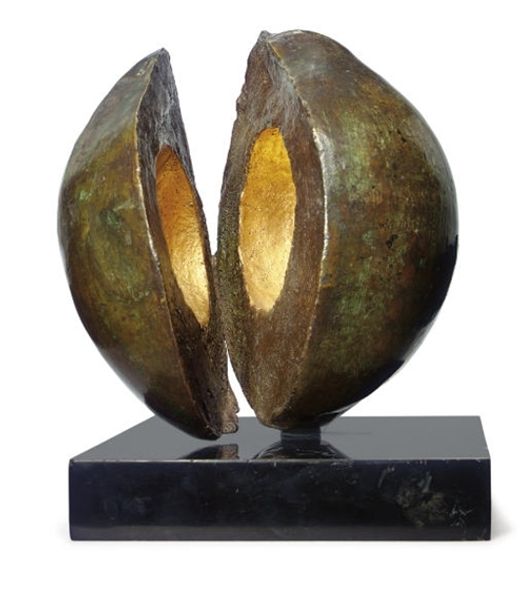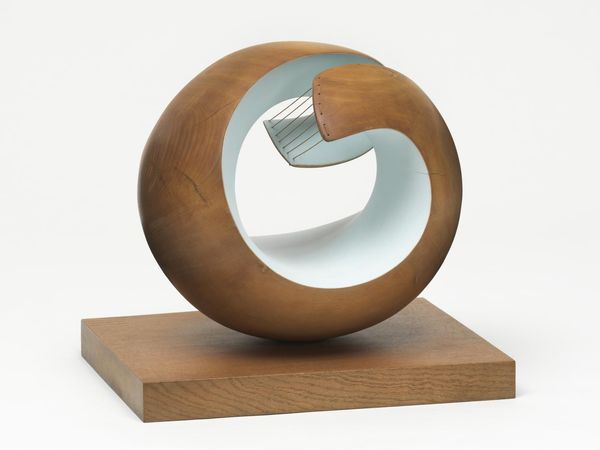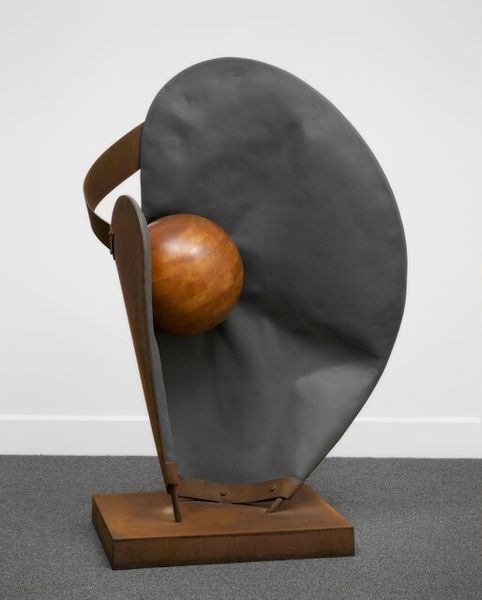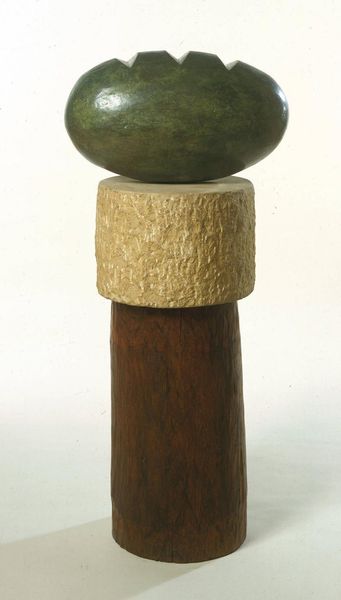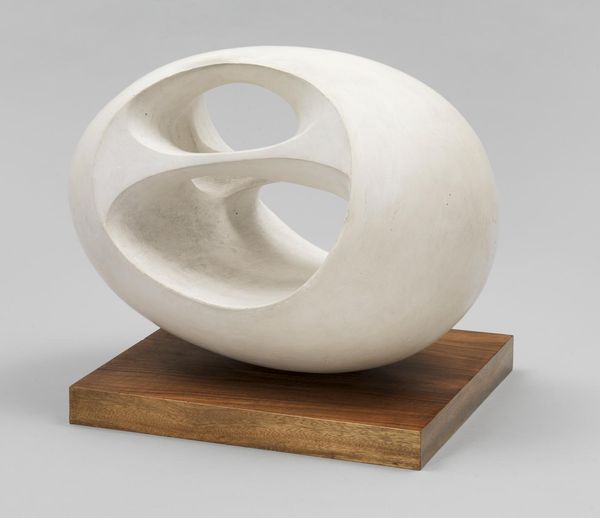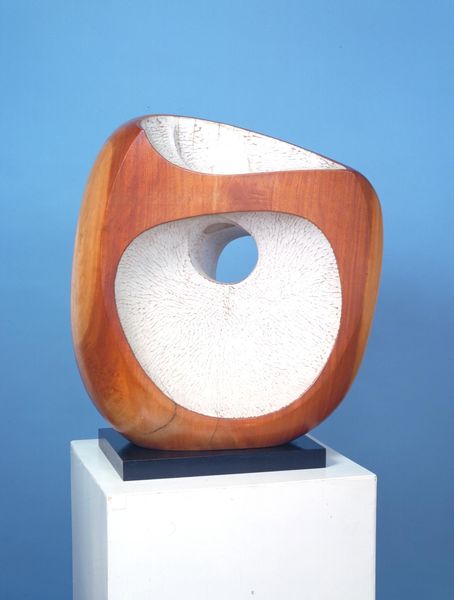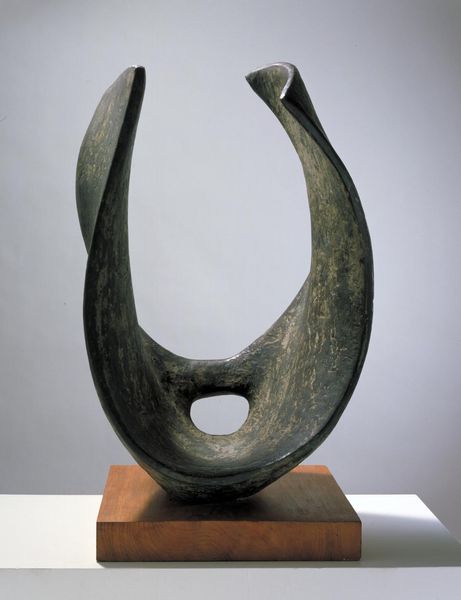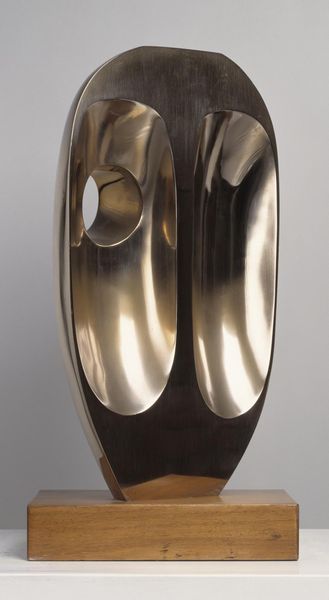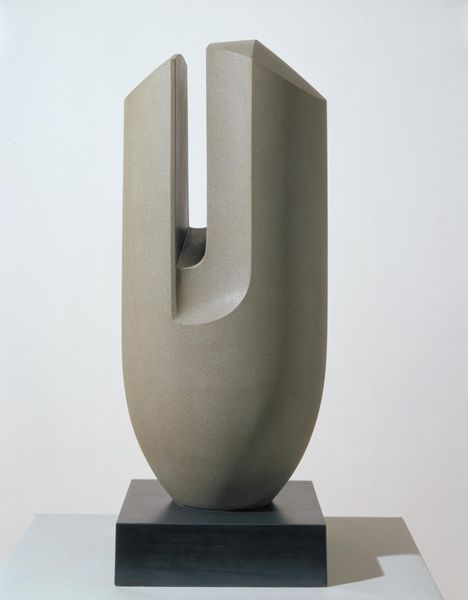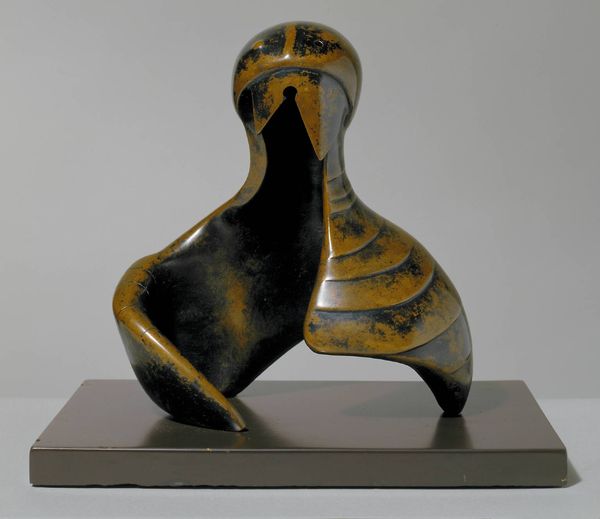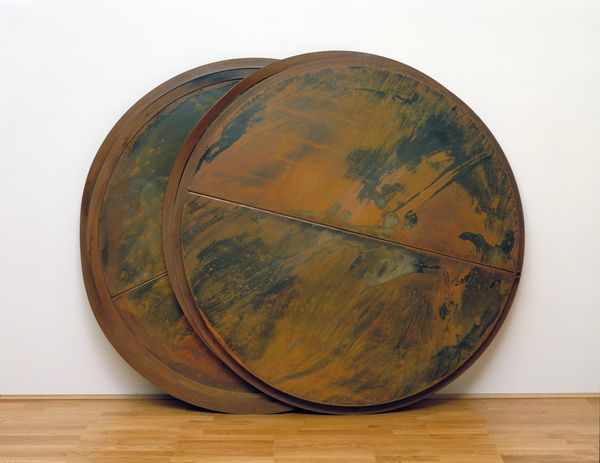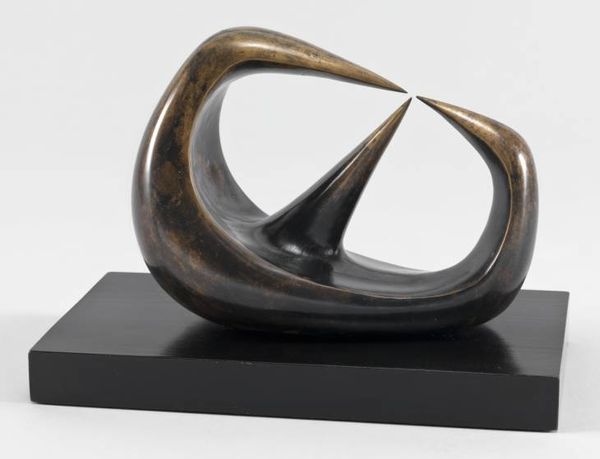
Dimensions: object: 343 x 508 x 273 mm, 100 kg
Copyright: © Bowness, Hepworth Estate | CC-BY-NC-ND 4.0 DEED, Photo: Tate
Curator: I find myself drawn to the quiet strength of Barbara Hepworth's sculpture, "Discs in Echelon." Those weighty forms, so close they almost touch... Editor: They remind me of Easter eggs, but like, fossilized, giant Easter eggs. There's a prehistoric feel to the smooth, dark bronze. Curator: Hepworth often explored themes of unity and connection. I wonder if she meant these forms to represent people, or perhaps a couple. Editor: Or even just the simple, beautiful fact of two things existing together. I love that the bronze has this mottled quality, as if it's aged by time and weather, even though it's obviously crafted. Makes you think about endurance, doesn't it? Curator: Absolutely. Hepworth was deeply influenced by the natural world, which is evident here. Considering the socio-political landscape of the time, it's not surprising she was seeking harmony. Editor: It's grounding, in a way. It's a reminder that even from the most chaotic of times, beauty and balance can still emerge. Curator: Indeed, and Hepworth’s talent was to capture that eternal potential. Editor: Right, art with heft.
Comments
tate 7 months ago
⋮
http://www.tate.org.uk/art/artworks/hepworth-discs-in-echelon-t03132
Join the conversation
Join millions of artists and users on Artera today and experience the ultimate creative platform.
tate 7 months ago
⋮
The title of Discs in Echelon announces its formal simplicity – the offset relation of two slightly different discs placed on a rectangular base. The discs present almost flat surfaces to each other, but the outer sides are more rounded; in elevation, a crisp edge at the discs’ upper shoulders is broadened as it descends. The original version of this work was carved directly by hand from ‘darkwood’ (possibly rosewood) in the 1930s. It was cast in bronze more than twenty years later. Gallery label, April 2012
